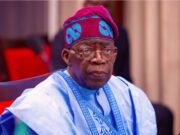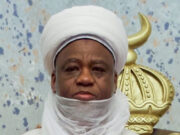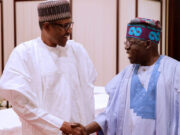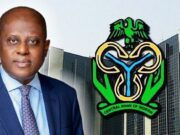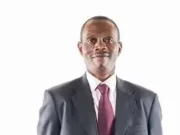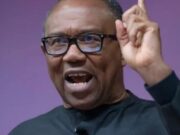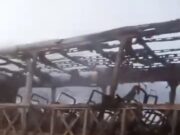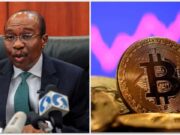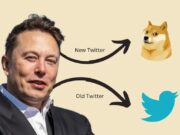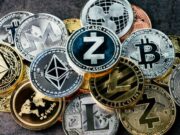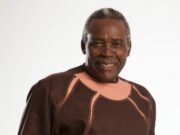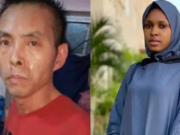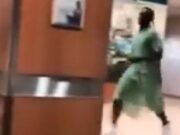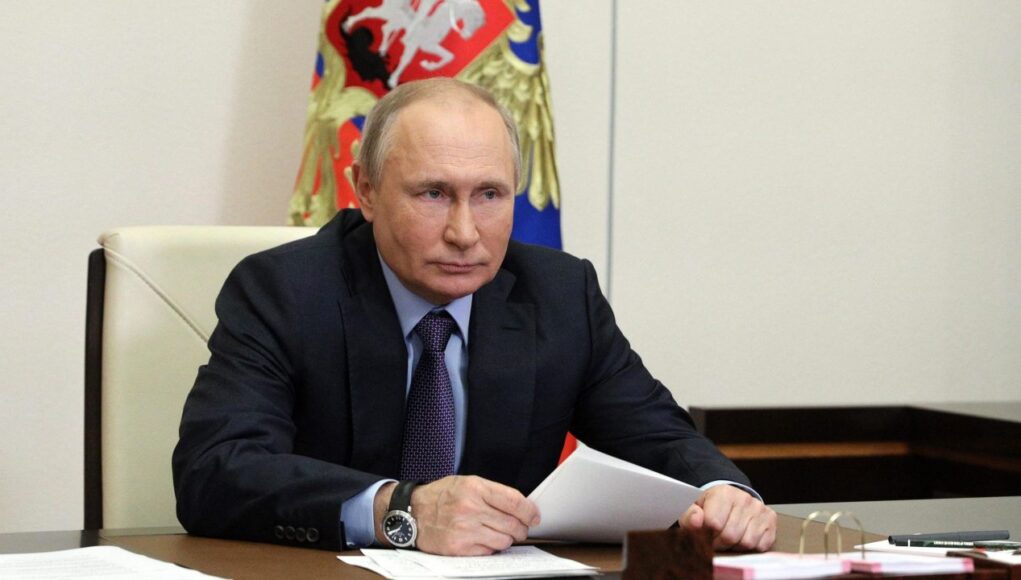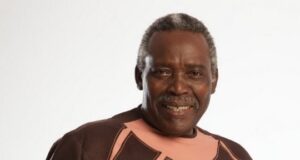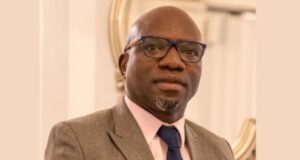
“When experience is not retained, as among savages, infancy is perpetual… Those, who cannot remember the past, are condemned to repeat it,” is a popular quote from a Spanish-American scholar and philosopher, George Santayana, in trying to emphasise on the need for lessons of history to be retained and worked with.
The reasons for the crisis currently rocking Russia and Ukraine are not far fetched from the reasons for the Cuban Missile Crisis of 1962, which almost plunged humanity into the Third World War, but mutual fear and diplomacy on the sides of the actors, saved the world from drawn nuclear Armageddon.
The Cuban Crisis and Russo-Ukrainian crisis have common similarities. The fear of one country setting up missiles based around its territory and becoming a potential threat to its existence and internal security is a major problem in international relations and politics.
Invasion of Ukraine by Russia became pertinent and subject to military morality to ward off potential enemies, hence Russia tries to protect her territory and eastern bloc, which had been surrounded by enemies from the North and allies within.
Putin had earlier insisted that Ukraine and Belarus are fundamentally parts of Russia, culturally and historically and holds considerable sway over Belarus, while discussions on reunification with Russia have been ongoing for years.
He presented NATO and the US in December with a set of written demands, which he said were necessary to ensure the security of his country and eastern bloc.
Foremost among them are a guarantee that Ukraine would never join NATO, that NATO draw down its forces in the Eastern European countries that have already joined, and that the 2015 cease-fire in Ukraine be implemented, but these, The Guardian learnt, seemed not happening. Meanwhile, as in the case of Cuban crisis, US, under the administration of President John F. Kennedy, was agitated with the USSR’s missile base in Cuba, including Soviet medium-range and intermediate-range ballistic nuclear missiles (MRBMs and IRBMs), which were built few kilometers away from the of US.
Kennedy responded by ordering the USSR’s premier, Nikita Khrushchev to dismantle the MRBMs and IRBMs base in Cuba or be seen as an enemy of the West under the US Monroe’s Doctrine. In return, Khrushchev asked the US to remove its Jupiter missiles from Turkey, which he considered a threat to the USSR too, before any deal could be reached between the two superpowers.
After threats and counter-threats of war between the two, the crisis was resolved but the naval quarantine continued until the Soviets agreed to remove their IL–28 bombers from Cuba and, on November 20, 1962, the US ended its quarantine and its Jupiter missiles were removed from Turkey in April 1963.
However, since the end of the Cold War between these superpowers, there has been a serious arms race between them. Though they got themselves to sign a nuclear Test Ban Treaty to prevent further arms race, this didn’t take away the mutual suspicions of being dominated by either of the powers, especially on the side of Russia, which regrets the disintegration of the Soviet Union.
Putin, who said disintegration of Soviet Union was catastrophic, viewed the move as a big attempt on the part of US to neutralise and absorb them, Russia didn’t see the admission of former members of USSR into NATO as a welcome development and feels that the US wants to surround her with enemies for easy domination.
Russia and the US have always been on the opposing sides in international politics and Russian President, Vladimir Putin, who was a former intelligence officer, understands why he shouldn’t leave any stone unturned in securing Russian sovereignty and existence as a superpower.
Thus Putin sees the attempt to admit any of the USSR’s state into NATO as another game targeted at Russia and decided to toe the path of the best form of defence, which is attack.
Recall that after the collapse of the Soviet Union, NATO expanded eastward, eventually taking in most of the European nations that had been in the Communist sphere. The Baltic republics of Lithuania, Latvia and Estonia, once parts of the Soviet Union, joined NATO, as did Poland, Romania and others.
As a result, NATO moved hundreds of miles closer to Moscow, directly bordering Russia, a situation Mr. Putin didn’t find funny.
In 2008, NATO stated that it planned — some day — to enroll Ukraine, though that is still seen as a far-off prospect. Mr. Putin has described the Soviet disintegration as a catastrophe that robbed Russia of its rightful place among the world’s great powers and put it at the mercy of a predatory West. He has spent his 22 years in power rebuilding Russia’s military and reasserting its geopolitical clout.
The Russian president calls NATO’s expansion menacing, and the prospect of Ukraine joining NATO, a major threat to his country. As Russia has grown more assertive and stronger militarily, his complaints about NATO have grown more strident.
He has repeatedly invoked the specter of American ballistic missiles and combat forces in Ukraine, though U.S., Ukrainian and NATO officials insist there are none.
But East-West relations worsened drastically in early 2014, when mass protests in Ukraine forced out a president closely allied with Mr. Putin. Russia swiftly invaded and annexed Crimea, part of Ukraine.
It was said that Moscow also fomented a separatist rebellion that took control of part of the Donbas region of Ukraine, in a war that still grinds on, having killed over 13, 000 people.
Mr. Putin appears intent on winding back the clock more than 30 years, establishing a broad, Russian-dominated security zone resembling the power Moscow wielded in Soviet days.
Now 69 years old and possibly edging toward the twilight of his political career, he clearly wants to draw Ukraine, a nation of 44 million people, back into Russia’s sphere of influence.
Putin said Ukraine shouldn’t join NATO, demanding that the West draw down its forces in the Eastern European countries that have already joined, but the West dismissed the main demands out of hand, while making overtures on other concerns, and threatening sanctions.
Moscow’s aggressive posture has also inflamed Ukrainian nationalism, with citizen militias preparing for a drawn-out guerrilla campaign in the event of a Russian occupation.
Mr. Putin’s timing could also be related to the transition from President Donald J. Trump, who was notably friendly to him and disparaging of NATO, to President Biden, who is committed to the alliance and distrustful of the Kremlin.
Meanwhile, in the early 1990s, Ukraine’s policy was dominated by aspirations to ensure its sovereignty and independence, followed by a foreign policy that balanced cooperation with the EU, Russia, and other powerful polities.
Relations between the two countries have been hostile since the 2014 Revolution of Dignity, which toppled Ukraine’s elected President Viktor Yanukovych and his supporters, because he refused to sign a political association and free trade agreement with the EU that enjoyed majority support in Ukraine’s parliament.
The Revolution of Dignity, also known as the Maidan Revolution, took place in Ukraine in February 2014 at the end of the Euromaidan protests, when a series of violent events involving protesters, riot police, and unknown shooters in the Ukrainian capital Kyiv culminated in the ousting of elected president Viktor Yanukovych and the overthrow of the Ukrainian government.
Earlier in November 2013, a wave of large-scale protests (known as iEuromaidan) erupted in response to President Yanukovych’s refusal to sign a political association trade association and free trade agreement with the EU at a meeting of the Eastern Partnership in Vilnius in Lithuania. These protests continued for months.
In February 2014, clashes between the protestors and the Bertuk (special riot police) became violent, and resulted in the deaths of nearly 130 people, including 18 police officers.
On February 21, an agreement between President Yanukovych and the leaders of the parliamentary opposition was signed that called for early elections and the formation of an interim unity government. The following day, Kyiv came under effective control of the protesters, and Yanukovych fled the city.
On the same day, the Rada (Ukrainian parliament) voted to remove Yanukovych from office by 328-to-0 (out of the Rada’s 450 members).
Yanukovych said that this vote was illegal and possibly coerced, and asked the Russian Federation for assistance. Russia considered the overthrow of Yanukovych to be an illegal coup, and did not recognise the interim government.
Widespread protests, both in favour of and against the revolution, occurred in the eastern and southern regions of Ukraine, where Yanukovych previously received strong support in the 2010 presidential election.
These protests escalated, resulting in a Russia military intervention, the annexation of Crimea by Russia and the creation of the self-proclaimed breakaway states of Donetsk and Luhansk.
Sequel to this, Ukraine’s post-revolutionary government wished to commit the country to a future within the EU and NATO, rather than continue to play the delicate diplomatic game of balancing its own economic and security interests with those of Russia, the EU, and NATO members.
In 2004 the Czech, Estonia, Hungary, Latvia, Lithuania, Poland and Slovakia, and had joined the EU, followed by Bulgaria and Romania in 2007.
The Russian government feared that Ukraine’s membership of the EU and NATO would complete a western wall of allied countries by restricting Russia’s access to the Black Sea.
With South Korea and Japan being allied to the US, the Russian government was concerned that Russia was being ring-fenced by potentially hostile powers.
In the wake of the Revolution of Dignity, Russia backed separatist militias in the Donetsk People’s Republic and the Luhansk People’s Republic in a war in Ukraine’s economically important Donbas region, on its eastern border with Russia.
In 2019, amendments were made to the Constitution of Ukraine, which enshrined the irreversibility of the country’s strategic course towards EU and NATO membership.
Throughout 2021, Russian military buildup on the border of Ukraine escalated tensions between the two countries and strained bilateral relations, with the United States, sending a strong message that invasion would be met with dire consequences for Russia’s economy.
But on February 24, 2022, Russia invaded Ukraine, which prompted Ukraine to break diplomatic ties with its eastern neighbor.
US Reacts
In early December, President Biden made clear that his administration was not considering sending troops to fight for Ukraine since, among other reasons, Ukraine is not a member of the NATO alliance and does not come under its commitment to collective defense.
Instead, the United States has sent anti-tank and antiaircraft weapons to Ukraine, increased the American military presence in NATO countries that border Russia, and ordered an additional 7,000 troops to Europe. The Pentagon also ordered the deployment of an armored brigade combat team to Germany to reassure skittish NATO allies in Eastern Europe.
Administration officials also warned that the United States could throw its weight behind a Ukrainian insurgency. But the real cudgel is financial.
Before the invasion, Mr. Biden threatened Mr. Putin with “economic consequences like none he’s ever seen.” Afterward, he began to put them in place. Mr. Biden, vowing to turn Mr. Putin into a “pariah,” has announced tough new sanctions aimed at cutting off Russia’s largest banks and some oligarchs, from much of the global financial system and preventing the country from importing American technology critical to its defense, aerospace and maritime industries.
The administration has also issued sanctions against the company behind an energy pipeline connecting Russia to Germany.
Mr. Biden has also said the United States was freezing trillions of dollars in Russian assets, including the funds controlled by Russian elites and their families, making them pay for what the American president called “a premeditated attack” against a free nation in Europe.
Western governments have also vowed to freeze assets belonging to Mr. Putin, but very little is known about what he owns and where it might be.
The Biden administration could also institute sanctions that could deprive Russians of their beloved next-generation phones, laptops and other gadgets.


